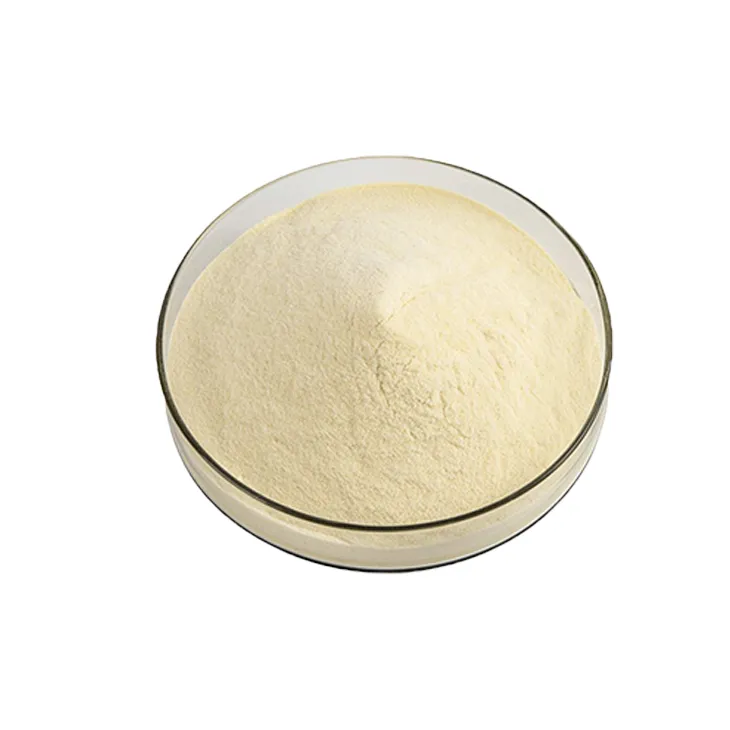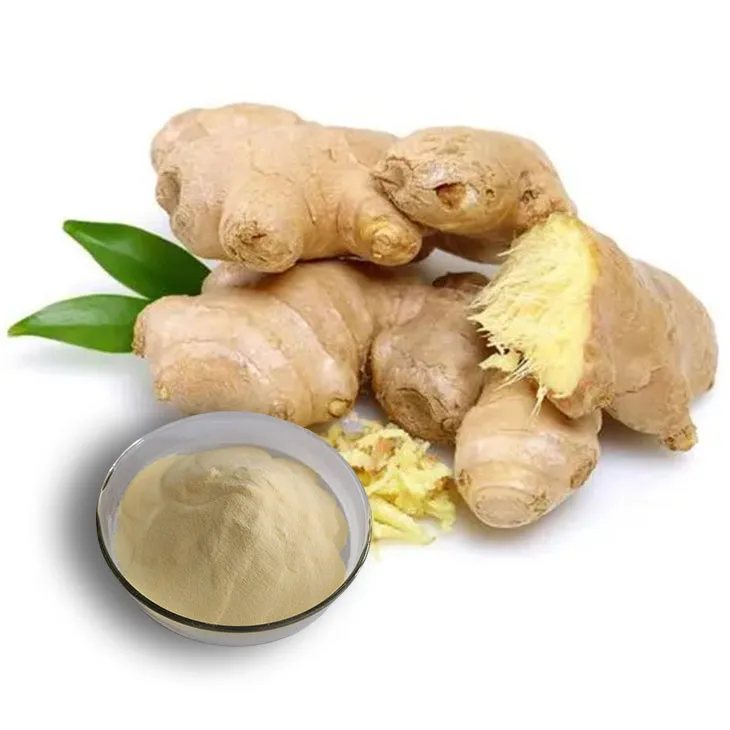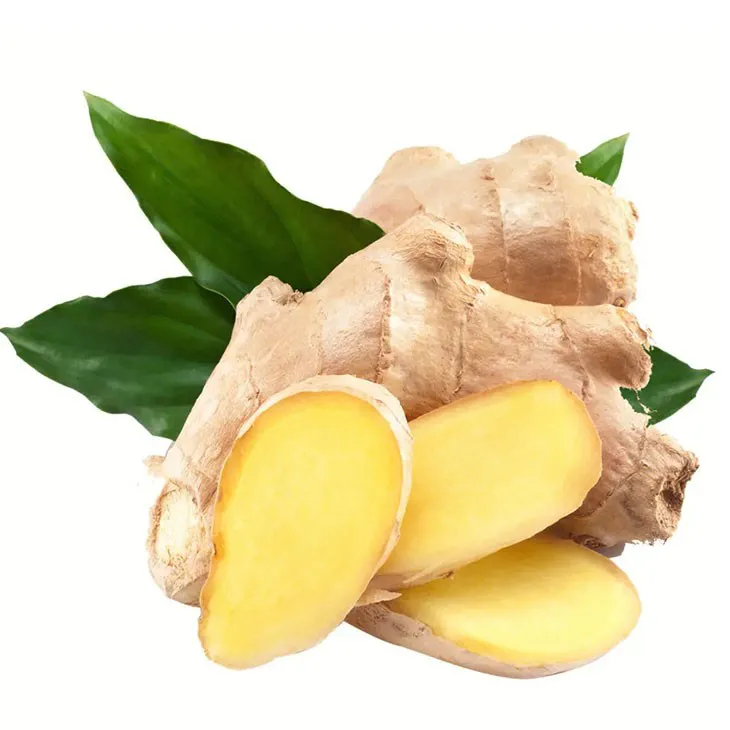- 0086-571-85302990
- sales@greenskybio.com
The process of extracting 6 - gingerol from ginger extract.
2024-11-26

1. Introduction
Ginger has been widely used in traditional medicine and cooking for thousands of years. Ginger Extract contains a variety of bioactive compounds, among which 6 - gingerol is of particular interest. 6 - gingerol has shown numerous potential health benefits, such as anti - inflammatory, antioxidant, and anti - cancer properties. Therefore, the extraction of 6 - gingerol from Ginger Extract has become an important research area with broad applications in the fields of natural medicine development, functional food production, and cosmetics.

2. Ginger Processing Before Extraction
2.1 Drying
Drying is an essential step in preparing ginger for extraction. There are different drying methods available, each with its own advantages.
- Air - drying: This is a traditional and simple method. Ginger is placed in a well - ventilated area, and the moisture gradually evaporates over time. However, it is a relatively slow process and may be affected by environmental factors such as humidity.
- Oven - drying: Using an oven allows for more controlled drying conditions. The temperature can be set to a specific level, usually between 40 - 60°C. This method is faster than air - drying but requires careful monitoring to prevent over - drying, which may affect the quality of the ginger and subsequent extraction.
- Freeze - drying: This is a more advanced method. Ginger is first frozen and then the ice is removed by sublimation under vacuum conditions. Freeze - drying can better preserve the bioactive compounds in ginger, but it is also more expensive and requires specialized equipment.
2.2 Grinding
After drying, the ginger needs to be ground into a fine powder. Grinding increases the surface area of the ginger, which is beneficial for the extraction process. There are different types of grinders that can be used, such as a mortar and pestle for small - scale grinding or an electric grinder for larger quantities. The particle size of the ground ginger should be as small as possible, but not so fine that it causes problems during extraction, such as clogging of filters.

3. Solvent Extraction
Solvent extraction is the most commonly used method for extracting 6 - gingerol from Ginger Extract. The choice of solvent is crucial as it affects the extraction efficiency and the purity of the final product.
3.1 Types of Solvents
- Ethanol: Ethanol is a popular solvent for 6 - gingerol extraction. It has good solubility for 6 - gingerol and is relatively safe and easy to handle. Ethanol can also be easily removed from the extract through evaporation, leaving behind the desired compounds. Different concentrations of ethanol can be used, with higher concentrations generally resulting in higher extraction yields, but also a higher risk of extracting other unwanted compounds.
- Acetone: Acetone is another effective solvent. It has a relatively high polarity, which makes it suitable for extracting polar compounds like 6 - gingerol. However, acetone is more volatile and flammable than ethanol, which requires more careful handling in the extraction process.
- Hexane: Hexane is a non - polar solvent. Although 6 - gingerol is a polar compound, hexane can be used in combination with other polar solvents in a two - phase extraction system. Hexane is mainly used to remove non - polar impurities from the ginger extract, thus improving the purity of the final 6 - gingerol product.
3.2 Factors Affecting Solvent Extraction
- Solvent Concentration: As mentioned above, the concentration of the solvent can significantly influence the extraction efficiency. Higher solvent concentrations may increase the solubility of 6 - gingerol, but may also extract more impurities. Therefore, it is necessary to optimize the solvent concentration based on the specific requirements of the extraction.
- Extraction Time: The extraction time also plays an important role. Longer extraction times generally lead to higher extraction yields, but there is a limit. After a certain period, the extraction rate may reach a plateau, and further increasing the extraction time may not result in significant improvements. Moreover, long - term extraction may also increase the risk of degradation of 6 - gingerol or extraction of unwanted compounds.
- Temperature: Temperature affects the solubility of 6 - gingerol in the solvent and the rate of mass transfer. Higher temperatures usually increase the solubility and the extraction rate. However, excessive temperatures may cause the degradation of 6 - gingerol or other bioactive compounds in ginger. Therefore, a suitable extraction temperature needs to be determined, usually in the range of 25 - 60°C.

4. Separation and Purification
After the solvent extraction, the extract contains not only 6 - gingerol but also other substances. Therefore, separation and purification are necessary to isolate 6 - gingerol.
4.1 Filtration
Filtration is a simple and commonly used method for the initial separation. The extract is passed through a filter, which can remove large particles and insoluble substances. There are different types of filters available, such as filter paper, membrane filters, and sintered filters. The choice of filter depends on the nature of the extract and the required filtration efficiency.
4.2 Centrifugation
Centrifugation can be used to separate substances with different densities. By spinning the extract at high speed in a centrifuge, heavier particles will sediment at the bottom, while the supernatant containing 6 - gingerol can be collected. Centrifugation can be more effective than filtration in removing fine particles and emulsions.
4.3 Chromatography
Chromatography is a powerful technique for purifying 6 - gingerol. There are different types of chromatography that can be used, such as:
- Column chromatography: In column chromatography, the extract is loaded onto a column filled with a stationary phase (such as silica gel or alumina). Different compounds in the extract will interact differently with the stationary phase and the mobile phase (usually a solvent). By carefully selecting the stationary and mobile phases, 6 - gingerol can be separated from other compounds as it elutes from the column at a different time.
- High - performance liquid chromatography (HPLC): HPLC is a more advanced and precise form of chromatography. It can achieve high - resolution separation of 6 - gingerol from other substances in the extract. HPLC is often used in research and quality control laboratories to obtain highly purified 6 - gingerol for further analysis and application.

5. Applications of 6 - Gingerol
5.1 Natural Medicine Development
Due to its anti - inflammatory, antioxidant, and anti - cancer properties, 6 - gingerol has great potential in natural medicine development. It can be used as an active ingredient in the formulation of drugs for treating various diseases, such as arthritis, cancer, and cardiovascular diseases. Research is ongoing to explore the mechanisms of action of 6 - gingerol in these diseases and to develop more effective drug formulations.
5.2 Functional Food Production
6 - gingerol can also be added to functional foods. Functional foods are foods that have additional health benefits beyond basic nutrition. For example, 6 - gingerol can be added to beverages, snacks, or dietary supplements. It can enhance the antioxidant capacity of the food, improve digestion, and provide other health - promoting effects. The addition of 6 - gingerol to functional foods not only provides health benefits to consumers but also adds value to the food products.
5.3 Cosmetics
In the cosmetics industry, 6 - gingerol can be used in skin care products. Its antioxidant property can help to protect the skin from free - radical damage, which is associated with aging and skin diseases. 6 - gingerol can also have anti - inflammatory effects on the skin, which is beneficial for treating skin inflammations such as acne and eczema. Therefore, it is increasingly being used in the formulation of creams, lotions, and serums.
6. Conclusion
The extraction of 6 - gingerol from ginger extract is a complex but important process. Through proper ginger processing, solvent extraction, and separation and purification steps, high - quality 6 - gingerol can be obtained. The obtained 6 - gingerol has wide applications in natural medicine development, functional food production, and cosmetics. However, further research is still needed to optimize the extraction process, improve the purity and yield of 6 - gingerol, and explore more potential applications of this valuable compound.
FAQ:
What are the common solvents used for extracting 6 - gingerol?
Common solvents for extracting 6 - gingerol include ethanol, methanol, and ethyl acetate. These solvents are often chosen because they can effectively dissolve 6 - gingerol from the ginger extract while also being relatively safe and easy to handle in the laboratory setting.
How does drying and grinding ginger affect the extraction of 6 - gingerol?
Drying and grinding ginger can increase the surface area of the ginger material. This larger surface area allows for better contact with the extraction solvent, which in turn can enhance the extraction efficiency of 6 - gingerol. Drying also helps to preserve the ginger and may prevent the degradation of some of the compounds, including 6 - gingerol, during the extraction process.
What is the significance of separating and purifying 6 - gingerol?
Separating and purifying 6 - gingerol is crucial because ginger extract contains many other substances. By separating and purifying 6 - gingerol, we can obtain a pure compound with known and consistent properties. This pure 6 - gingerol can then be accurately studied for its biological activities, and it can also be used more effectively in applications such as natural medicine development and functional food production.
How can the extraction efficiency of 6 - gingerol be optimized?
The extraction efficiency of 6 - gingerol can be optimized by carefully controlling several factors. These include using the appropriate solvent concentration, extraction time, and temperature. For example, a higher solvent concentration may initially lead to better extraction, but there may be a point of saturation. The extraction time needs to be long enough to allow sufficient dissolution of 6 - gingerol, but too long may lead to the extraction of unwanted compounds. The optimal temperature can also vary depending on the solvent used, but generally, a moderate temperature can enhance the solubility and diffusion of 6 - gingerol.
What are the applications of 6 - gingerol in natural medicine development?
6 - gingerol has several applications in natural medicine development. It has been shown to have anti - inflammatory properties, which can be beneficial for treating various inflammatory conditions. It may also have antioxidant effects, helping to protect cells from oxidative damage. Additionally, 6 - gingerol has potential anti - cancer properties, although more research is needed in this area. In natural medicine, it can be formulated into various products such as tablets, capsules, or tinctures for therapeutic use.
Related literature
- Extraction and Characterization of 6 - Gingerol from Ginger: A Review"
- "Optimization of 6 - Gingerol Extraction from Ginger for Medicinal Applications"
- "The Role of 6 - Gingerol in Functional Food and Natural Medicine"
- ▶ Hesperidin
- ▶ citrus bioflavonoids
- ▶ plant extract
- ▶ lycopene
- ▶ Diosmin
- ▶ Grape seed extract
- ▶ Sea buckthorn Juice Powder
- ▶ Beetroot powder
- ▶ Hops Extract
- ▶ Artichoke Extract
- ▶ Reishi mushroom extract
- ▶ Astaxanthin
- ▶ Green Tea Extract
- ▶ Curcumin Extract
- ▶ Horse Chestnut Extract
- ▶ Other Problems
- ▶ Boswellia Serrata Extract
- ▶ Resveratrol Extract
- ▶ Marigold Extract
- ▶ Grape Leaf Extract
- ▶ blog3
- ▶ blog4
-
Organic Tongkat Ali extract powder factory.
2024-11-26
-
How to make powder with ashwagandha extract.
2024-11-26
-
Rosehip extract manufacturers from China.
2024-11-26
-
The best cat's claw extract in nature.
2024-11-26
-
Chinese Dandelion Leaf Extract Suppliers.
2024-11-26
-
Echinacea Extract
2024-11-26
-
Resveratrol extract
2024-11-26
-
Ginger Extract
2024-11-26
-
Angelica sinensis extract
2024-11-26
-
Fenugreek Extract Powder
2024-11-26
-
Black Pepper Extract
2024-11-26
-
Calendula Extract
2024-11-26
-
Reishi mushroom extract
2024-11-26
-
Polygonum multiflorum extract
2024-11-26
-
Rose Hip Extract
2024-11-26




















